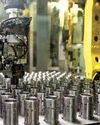FORCING AN INDIVIDUAL TO BE CREATIVE, AGAINST PAY, DEADLINES, AND WITHOUT BREAKS, LEADS TO ANXIETY AND PERFORMANCE ISSUES

EXHIBIT A: In 2004, Google’s co-founders Larry Page and Sergey Brin, in a move then unheard of, announced in their Founders’ IPO letter to prospective investors that each one of their employees was free to devote one full day per week (20 percent of their time) to any fresh or existing Google-related passion project. The letter famously quoted the duo as saying, “We encourage our employees, in addition to their regular projects, to spend 20% of their time working on what they think will most benefit Google. This empowers them to be more creative and innovative. Many of our significant advances have happened in this manner.” Not coincidentally then that several of Google’s most well-known products like AdSense, Gmail, Google Maps, Google News, Google Talk, and Orkut, were born out of this rather ingenious move!
Exhibit B: In 1930, a soap company, Kutol Products, started manufacturing a wallpaper cleaner – a non-toxic, non-staining, reusable modeling compound to clean coal residue. Kay Zufall, a nursery school-teacher and wife of Joe McVicker, nephew of founder Noah McVicker, saw this pliable, putty-like substance and was struck by a brainwave – why couldn’t they market the doughlike product to kids as a toy? The trio called the cleaner Play-Doh and started publicizing it aggressively within the kids’ toy segment. Within the next few years, Kutol, which was at the brink of bankruptcy then, was out of its financial turmoil. In 1991, Hasbro acquired the brand and now Play-Doh is one of its best-selling products!
It’s amazing what creativity, fresh thinking, and innovation can do, right?
This story is from the {{IssueName}} edition of {{MagazineName}}.
Start your 7-day Magzter GOLD free trial to access thousands of curated premium stories, and 9,000+ magazines and newspapers.
Already a subscriber ? Sign In
This story is from the {{IssueName}} edition of {{MagazineName}}.
Start your 7-day Magzter GOLD free trial to access thousands of curated premium stories, and 9,000+ magazines and newspapers.
Already a subscriber? Sign In

MEMORIES & IMPRESSIONS
Ratan Tata was an exceptional human being. He was a visionary leader, esteemed industrialist, and a humanitarian, who left an indelible mark on India and the world.

The Robotaxi Market
The robotaxi market is shaping up to be a high-stakes battleground as tech giants and automakers race to transform urban mobility.

And the Nobel Prize Goes to AI
The recent Nobel Prize T awards to AI pioneers affiliated with Google have sparked a broader conversation about Big Tech's influence on research and the limitations of traditional prize categories.

Ola Electrified
Once considered a trailblazer in India’s electric vehicle (EV) ecosystem, Bhavish Aggarwal’s Ola Electric now faces a major accountability crisis.

Sharp Slide in Industrial Output on Eve of Deepavali
India’s index of industrial production (IIP) saw a sharp reversal in August, contracting by 0.1 per cent, in stark contrast to the 4.7 per cent growth in July, mostly because of significant contractions in mining and electricity generation.

Heralding the Solar Era with Sustainable Electrification
RAJEEV KASHYAP on the economics of solar power, the hurdles in scaling it, and much more

A WELL-GREASED MACHINE
The OmniBook X14 laptop runs on first-generation Snapdragon X Elite, which bets big on Al-enabled productivity and battery life, but falls short when it comes to overall experience, says Deep Majumdar

DO NOT LETA HEALTH CRISIS RUIN YOUR FINANCIAL HEALTH
For a family of four living in a metro, it is recommended to opt for a family floater health insurance plan with a sum insured of at least Rs 15-20 lakh

Disruption Ahead: Beyond Organisation Charts and Structures
ALBERT EINSTEIN FAMOUSLY said, “We cannot solve our problems with the same thinking we used when we created them.

Dr. Rahul Shivajirao Kadam: A Visionary Leader Blending Sustainability, Innovation, And Social Empowerment
We are on the stage of global warming, and these technologies not only help prevent further damage but also leave behind a better environment for future generations.